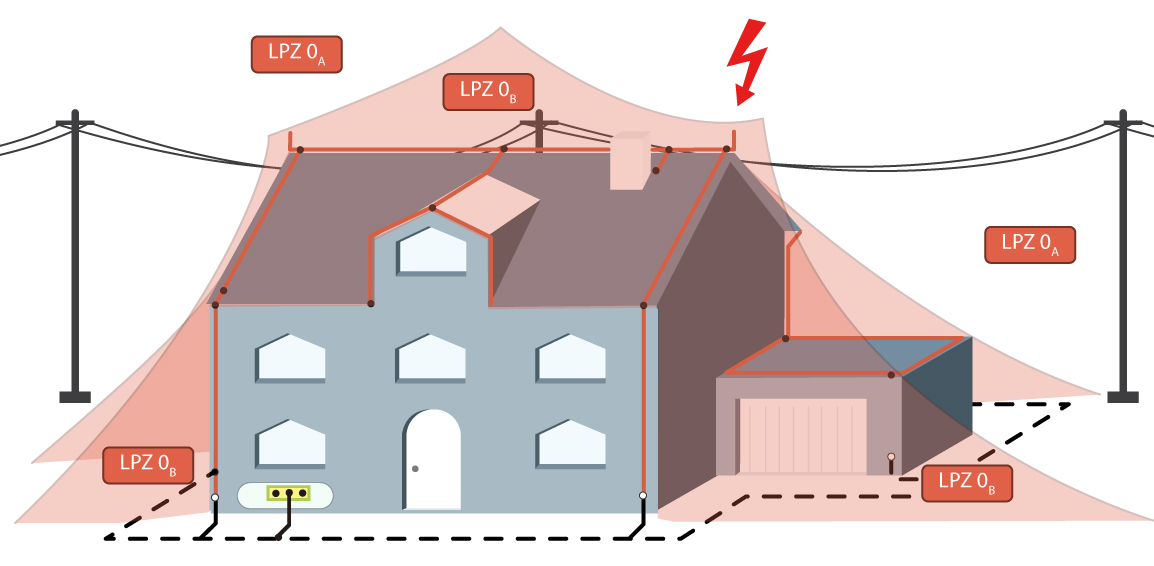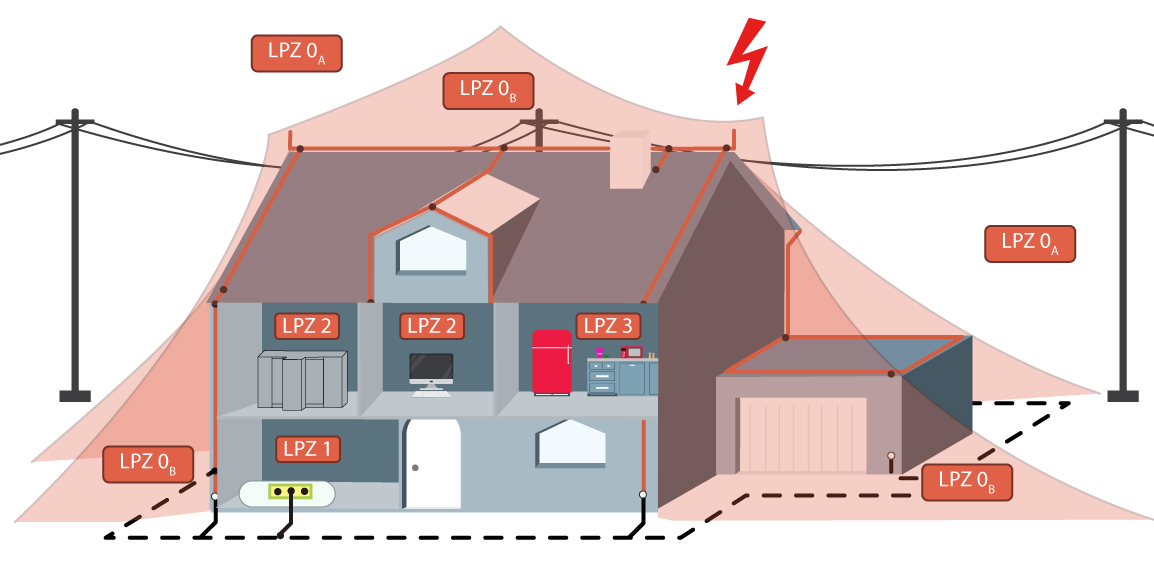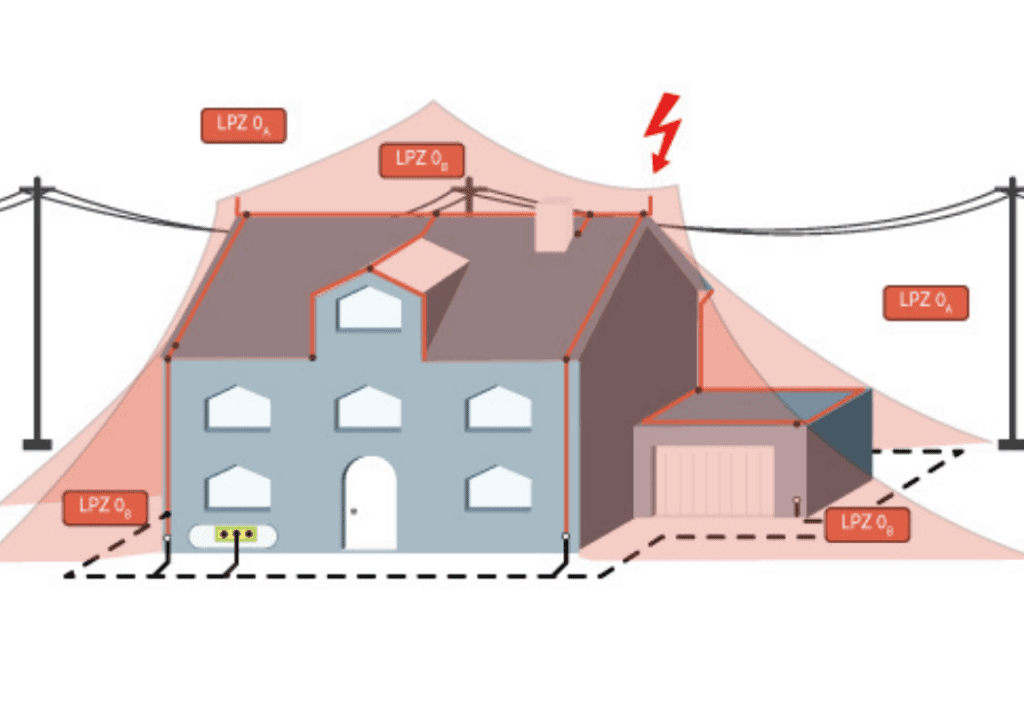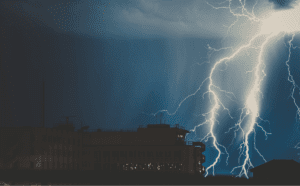This article is in continuation to our series on Lightning Protection Systems and Design. You can read our article about ‘Surge Protection Devices’ and our other article on, ‘Lightning Protection System Design and Products’.According to the Apex Worldwide Standard on Lightning Protection, IEC 62305-4 Protection against lightning – Part 4: Electrical and electronic systems within structures, the concept of Lightning Protection Zones (LPZ) is the basis of all lightning protection. The central idea is to limit current and voltage surges, induced by lightning or otherwise, from damaging a structure or its contents (people or equipment) by dividing the structure into a risk zones. These zones are nested within each other, with the most sensitive zones being the innermost. By using standard appropriate lightning protection systems, such as lightning arrestors and SPD’s, the effects of lightning hitting the outer zone, directly or indirectly, are meant to be reduced before they can affect people or sensitive equipment in the inner zones.
LPZ Definition
IEC 62305 Part 4 defines the Lightning Protection Zones as shown below.
OUTER ZONE
Zone 0: Zone where the threat is due to the unattenuated lightning electromagnetic field and where the internal systems may be subjected to full or partial lightning surge current.
LPZ 0 is subdivided into:
LPZ 0A: Zone where the threat is due to direct lightning flash and full lightning electromagnetic field. Internal systems may be subjected to full lightning surge current.
LPZ 0B: Zone protected against direct lightning flashes but where the threat is the full lightning electromagnetic field. The internal systems may be subjected to partial lightning surge current.

The diagram above shows the difference between LPZ 0A and LPZ 0B. Zone 0A is not protected against lightning strikes and is thus subject to the full lightning electromagnetic field while Zone 0B is protected by lightning arrestors (as per the rolling sphere method) and is thus subject only to partial lightning surge current.
INNER ZONE
LPZ 1: Zone where the surge current is limited by current sharing and isolating interfaces and/or by SPDs at the boundary. Spatial shielding may attenuate the lightning electromagnetic field.
LPZ 2….n: Zone where the surge current may be further limited by current sharing and isolating interfaces and/or and by additional SPDs at the boundary. Additional spatial shielding may be used to further attenuate the lightning electromagnetic field.

As seen in the diagram above, LPZ 1 covers the entrace of the electrical system into the building which would face the indirect effects of an external lightning strike. LPZ 2 and above contain sensitive electrical equipment that need to be protected against surges. Depending on the number, type and the rating of the equipment to be protected, suitable LPZ can be defined. These may include small local zones such as equipment enclosures or large integral zones that cover the whole structure.
The Axis Lightning Risk Assesment software gives users the ability to define Lightning Protection Zones and thus identify specific risk for each zone.
Surge Protection Device (SPD) Selection Guide:
Surge Protection Device’s (SPD’s) are used in areas where a transition takes place between two different LPZ’s. For example, a Type 1 or Type 2 SPD would be used at the main power distribution switchboard where the electrical system enters the structure. The table above briefly describes the various LPZ transitions that occur in most strucutres and how one can choose the SPD Type based on these transitions.

Defining the correct Lightning Protection Zones for your structure is the first and most important step in the correct design and implementation of Lightning Protection for your strucutre. These zones are an important aspect of the selection of SPD’s but SPD’s also have other characteristics that need to be considered as we discuss in our other article on ‘Surge Protection Devices (SPD’s)’.







